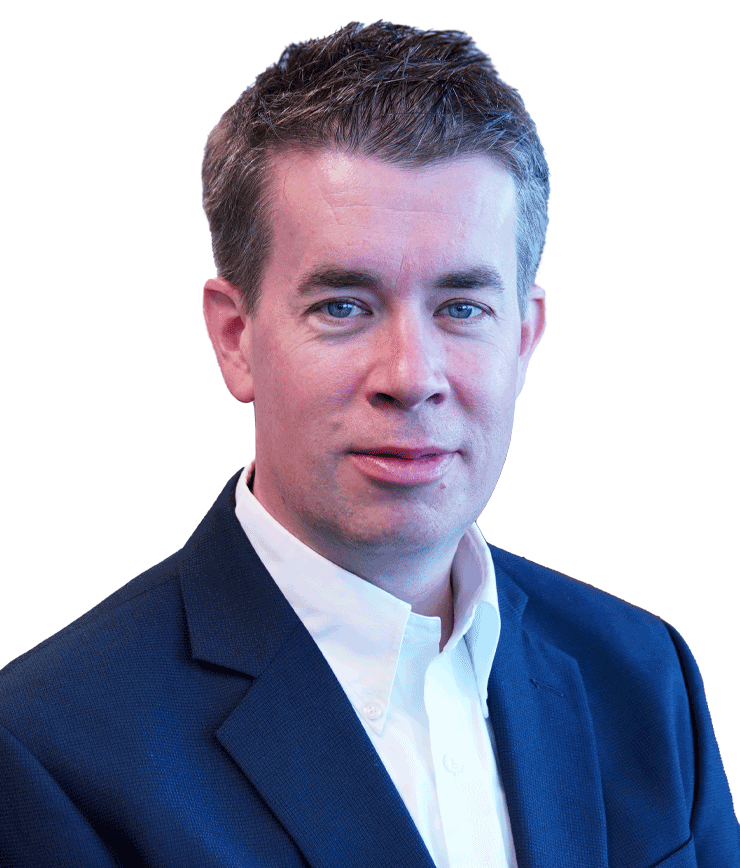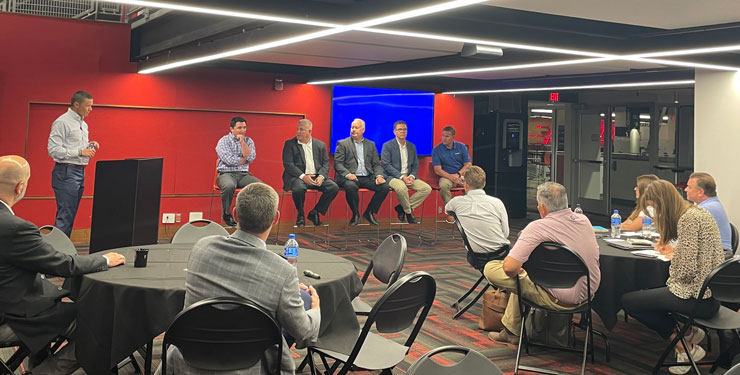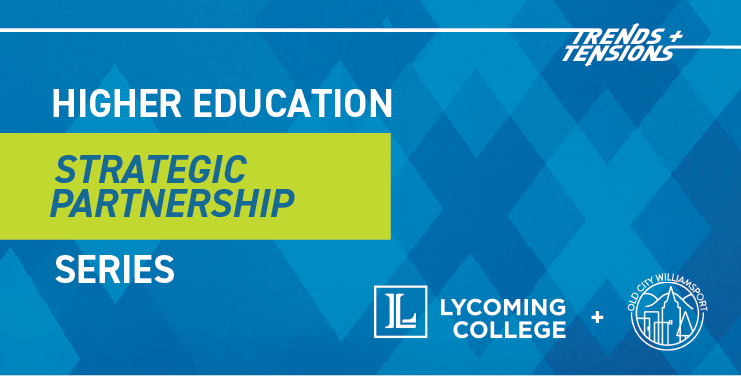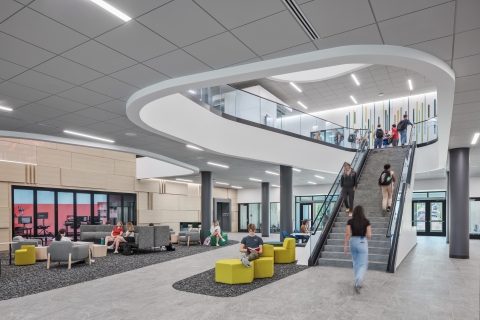
Summer Homework: Listening and Learning from Higher Education Leaders
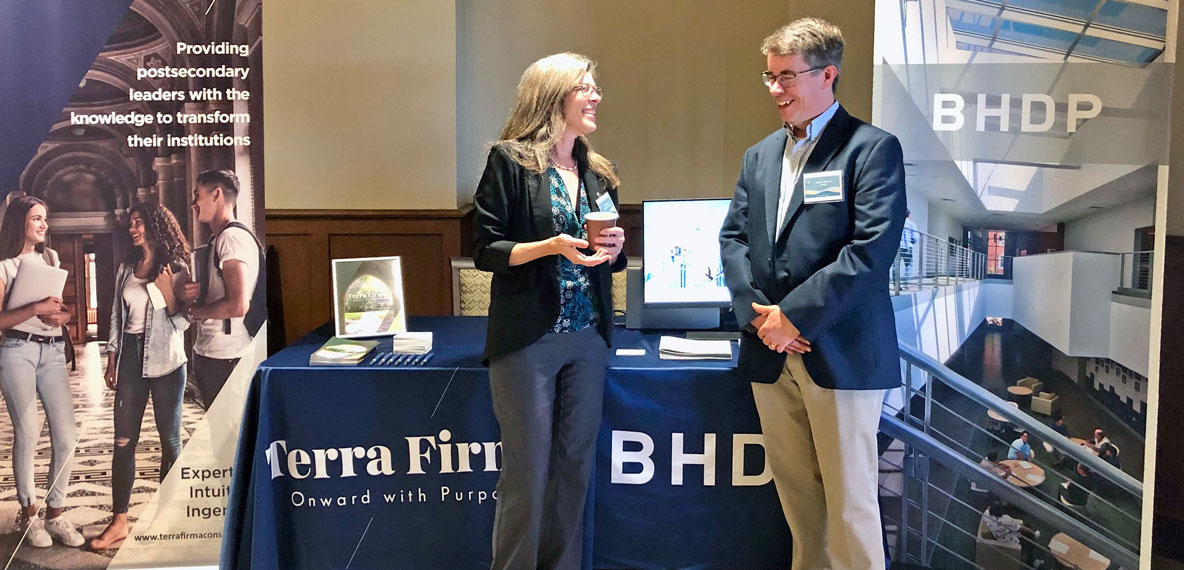
Growing up in the United States, we become accustomed to the traditional calendar pattern of school year followed by summer vacation, followed by school year again. As Labor Day weekend and the symbolic end of summer disappear quickly in our collective rearview mirror, I remember the days when May and June teased freedom from homework and tests, while September brought the promise of cooler weather and excitement (and for some of us, dread!) of returning to the classroom. As we age, this cycle becomes the bedrock of how we live and continues through our time in college and beyond. Ultimately, we even condition our children to the same rhythm.
Breaking from the norm, I spent this summer “in the classroom.” I attended a number of workshops, conferences, and other events across North Carolina, South Carolina, Virginia, and Tennessee, giving me a chance to assess the current state of affairs in higher education. Even though this educational experience ran contrary to that stereotypical picture of a summer spent in low gear whiled away on “some beach, somewhere,” the stories, problems, and opportunities I gathered were just as unique as the seashells I’ve found washed up by the southeastern surf.
Pencils Down—Higher Education at a Crossroads
At a multi-day meeting of college presidents hosted by Tusculum University earlier this summer, leaders from a variety of private institutions debated, discussed, and shared ideas on shepherding their schools through a new series of challenges posed by the post-pandemic era. As students return to in-person living and learning, campuses across the country face formidable obstacles, including:
- Rising tuition costs and debt
- Deferred maintenance
- Student mental health
- Finding and retaining faculty and staff
- Enrollment “cliff”
- Disparity between health program graduates and healthcare provider needs
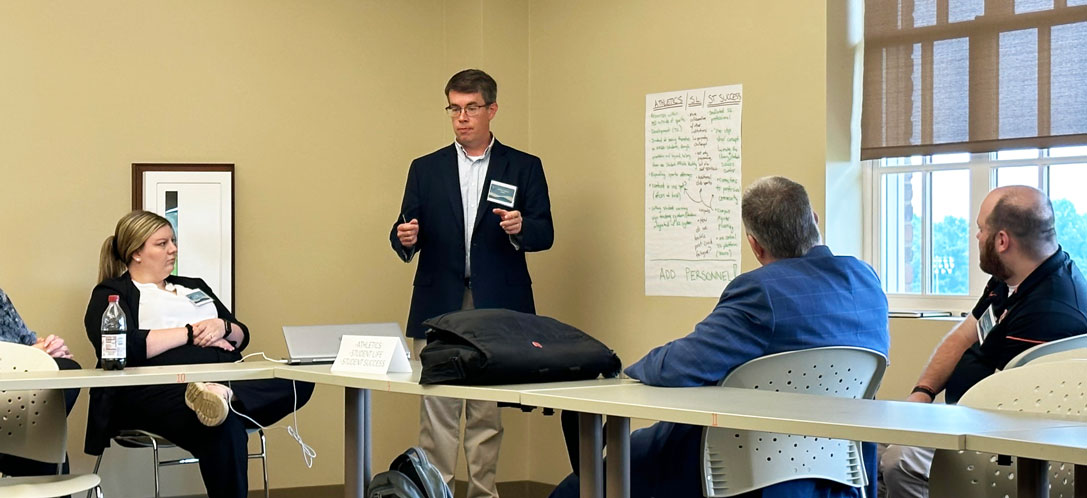
Discussing current issues in student life, student success, and student athletics with private institution leaders during a breakout session at Tusculum University.
While Washington, DC, grapples with the student loan repayment-or-forgiveness debate, tuition is rising at many institutions around the country—ostensibly to pay for new building campaigns, campus improvements, new programs, and more. Yet many students are becoming more vocal with the question, “Is a college education worth it at the costs presented to us?” Students choosing the path of higher education are more frequently encountering facilities whose deferred maintenance costs are in the millions, if not higher. Private institutions face “either-or” decision-making with limited funds; meanwhile, at public institutions, reduced state budget allotments have made it more challenging to keep pace with upkeep and renovation costs, requiring selectivity in which projects are prioritized.
Simultaneously, the student body returning to campuses in 2023 is one of the most diverse colleges have ever seen—but one that demands that institutions “meet them where they are” in supporting their mental health and well-being, not just providing an education.
Guiding these students through four years (or more!) of study requires, of course, competent faculty and staff. With the advent of remote work and a mobile workforce that can choose where they call home, some institutions face a formidable challenge in attracting talent to their localities. Keeping pace with the salaries offered in corporate America, too, presents a difficulty for universities—as one southern college president remarked, “How can I look at employees and tell them I value them if I can’t offer them a livable salary?” Indeed, retaining valuable staff and faculty is proving equally difficult as well, with shifting expectations of roles and expanded responsibilities over the last two decades, especially in the domain of resident life.
When flying through a midterm exam in my college days, I’ll never forget the anticipation of hearing the professor call out, “Pencils down!” Time is a factor when facing challenges, and time is critical—especially for small and medium-sized institutions in the U.S. With the possibility of a recession still lingering through the end of 2024, and the predicted enrollment cliff arriving in 2025 (predicted to arrive especially acutely in the Midwest and Northeast), the next few months are crucial for planning and addressing enrollment and other challenges.
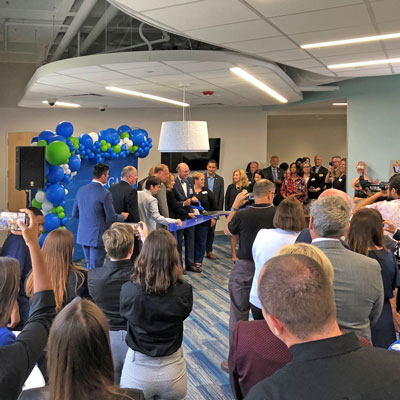
Galen College of Nursing opens its Roanoke, VA, campus in summer 2023.
Finally, healthcare systems around the country are sounding the alarm about the gulf between approximately one million nursing professionals in the United States and a need for two million—while educational institutions produce around 100,000 nursing professionals annually, and the gap is only growing.
Aside from the staff shortage problem this presents to healthcare bodies, on the higher education side, the post-pandemic challenge is one of attracting and matriculating students successfully in this area of study.
Acing the Final—Opportunities for Innovation
As with all industries, where challenges abound, there also lies the chance to think differently and innovate. Higher education is no exception. Across this “summer learning” tour, I heard numerous ideas discussed to begin addressing these challenges, including:
- On rising tuition costs and debt: “Among other things, Generation Z seems to perceive barriers and lack an understanding of how their personal value will appreciate after college,” shared one Vice Provost from a public university. Indeed, according to one study, 4-in-10 students nationally do not finish their degree and leave college in debt. The solutions offered here included a renewed focus on restructuring the college experience to help students better understand “why they’re here,” and breaking the path to graduation down into smaller, achievable milestones that come sooner, engendering a sense of success in the students along the way.
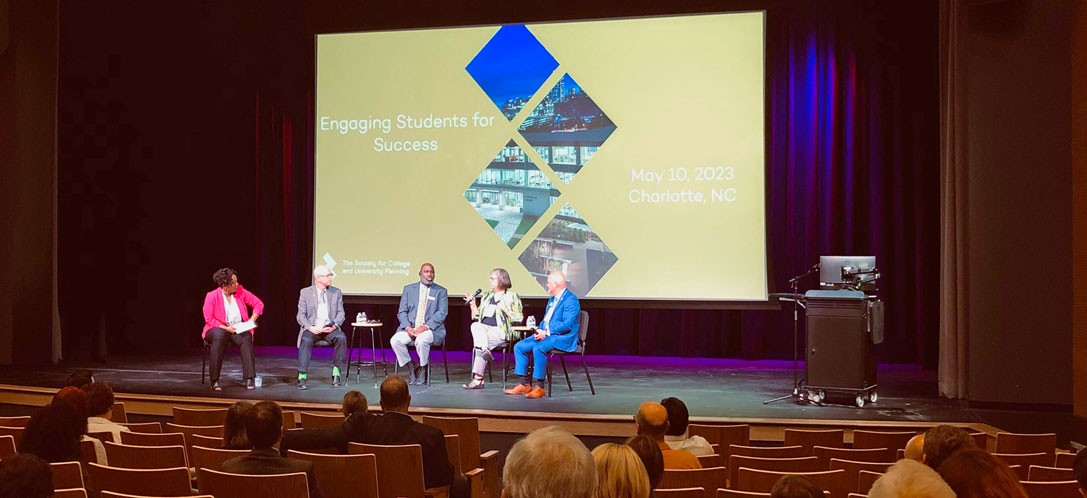
Central Piedmont Community College (Charlotte, NC) hosted a SCUP symposium on student success in the post-pandemic era.
- On deferred maintenance: A private university shared the case study of how they turned to students as a deferred maintenance labor force, offering part-time jobs for simple maintenance tasks they simply did not have the staff to address. Tackling deferred maintenance should also involve conducting a campus and facility conditions assessment and developing a comprehensive plan for prioritizing maintenance and renovation issues. This assessment-backed plan can justify facility needs budgets!
- On retaining students: Universities are looking at students’ parents as key partners in holding onto their enrolled students, unpaid “retention agents” almost—after all, who is better suited to encourage students to stay the course when the coursework gets more rigorous? Further, some institutions are using their student affairs departments to ensure faculty have all the tools possible to offer students so they can taste success and feel compelled to keep moving forward in their degree path.
- On student mental health: “How do we get students out of their rooms and back into the campus community?” was a repeating refrain. One idea discussed at a breakout session came from the Provost of a private university: “We became structurally proactive through an ‘intervention’ model.” The essential element behind this approach was actively tracking a series of key “leading” and “lagging” indicators for all students. Then, they used those metrics to alert faculty and/or staff tied to particular students when they needed to connect with a student personally before an issue reached a critical point and partner with them to solve that particular problem. They deployed a Success Intelligence Platform (SIP) for gathering the metrics.
- On finding staff: Institutions are getting more creative in how they recruit staff and faculty—in some cases, turning directly to existing relationships with their vendors and service providers in the private sector and offering a path for a known, qualified professional to “switch seats to the other side of the table.”
- On combatting the enrollment cliff: When addressing the theorized enrollment cliff and the potential for a smaller student pool for recruiting, one college President remarked: “I don’t have to be the fastest; I just have to know my competition and be faster than them… It’s the classic notion of not being faster than the bear, just being faster than YOU!” In our experience, this boils down to ensuring your strategic and master plans are up-to-date, focused, and achievable.
- On health education shortfalls: Numerous colleges are putting a renewed emphasis on their health and nursing education programs, including partnering with healthcare institutions to create an employment pipeline, recruiting more non-traditional students, and looking at data to determine where satellite campus expansions make sense based on community health needs “meeting and providing educational opportunities to people where they are,” as one gentleman shared.
BHDP Architecture has decades of experience helping higher education institutions around the country grapple with these and other strategic and planning challenges. We offer a no-fee initial consultation to help campus leaders better understand their unique obstacles, along with opportunities to position their campus to attract and retain students and faculty. If you’re interested in starting that conversation, please reach out to me at [email protected].
Author
Content Type
Date
October 03, 2023
Market
Practice
Topic
Higher Education Strategic Partnerships
Hybrid Learning

